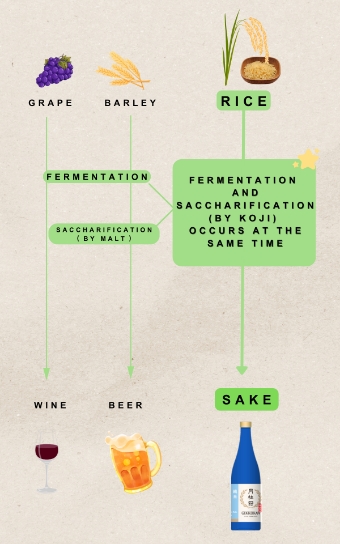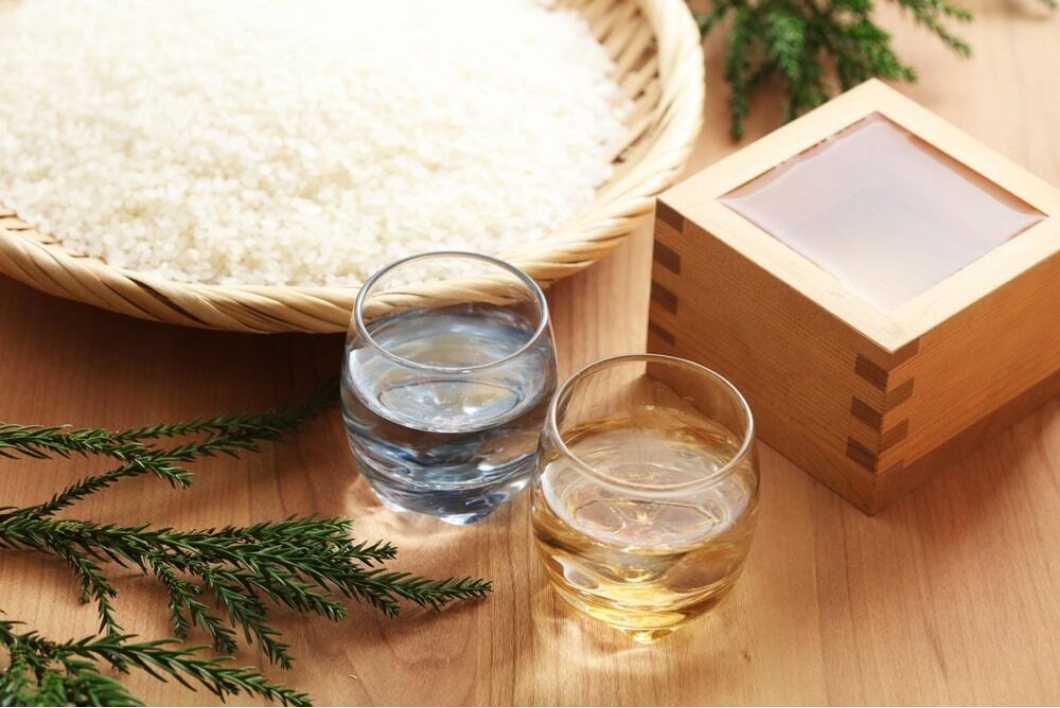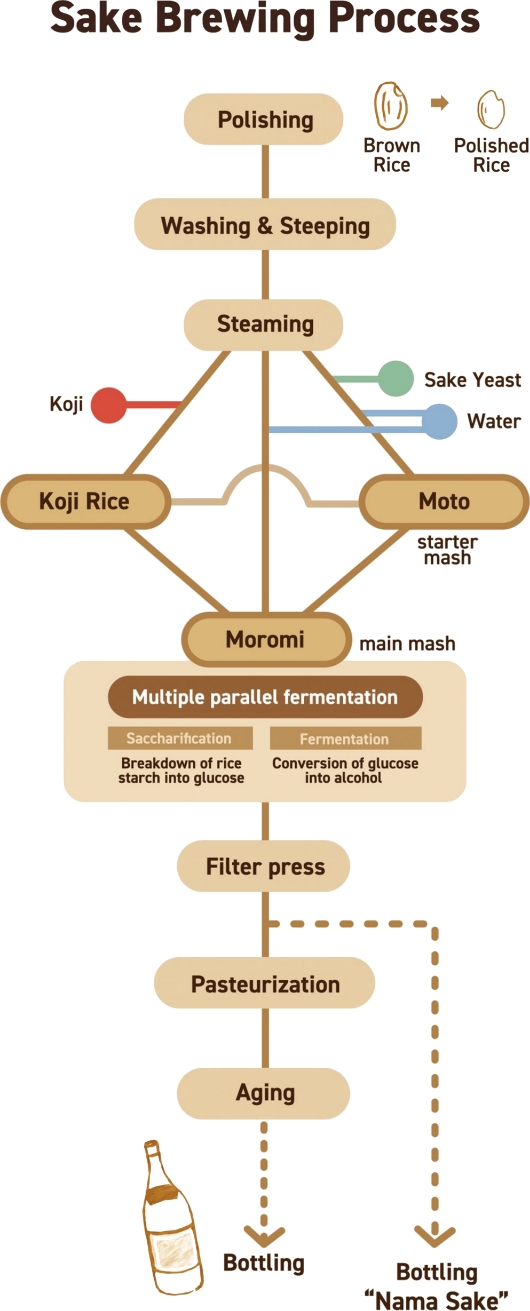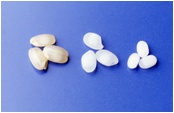Sake 101
Made from the simple ingredients of rice and water, sake is completely natural.
Sake is a naturally fermented alcoholic beverage, similar to wine and beer. Sake's ingredients are simple: rice, rice koji, and water, with no added artificial additives, enhancers, preservatives, or sulfites. Koji creates sugar from rice; yeast creates alcohol from sugar. The microorganisms involved give sake a unique umami-rich flavor profile. To ensure great flavor, freshness is crucial, and Gekkeikan consistently aims to deliver fresh, high-quality sake year-round from our brewery in Japan and overseas.

Nutritional Information of Sake
| Calories | 108kcal |
|---|---|
| Protein | 0.5g |
| Fat | less than 0.1g |
| Sugar | 5.0g |
| Dietary Fiber | less than 0.1g |
| Calcium | 1.6mg |
| Iron | less than 0.1g |
|---|---|
| Sodium | 3.7mg |
| Potassium | 2.9mg |
| Magnesium | 0.9mg |
| Vitamin B1 | 3.0μg |
Per 100ml (3.3 oz) of Gekkeikan Traditional Sake 15.6% alc/vol
Caloric Information
| Sake | 105-110 kcal |
|---|---|
| Beer | 40-70 kcal |
| Wine | 80-100 kcal |
| Shochu | 110-200 kcal |
| Whiskey | 225-250 kcal |
Per 100ml

Japanese Culture and Sake
In traditional Japanese culture, sake holds a significant role in celebrating seasonal holidays and special events. It's cherished during occasions like toasting the New Year, honoring local festivals, and marking wedding vows. Whether sipped from an antique porcelain cup or a small wooden cup (masu), infused with herbs or adorned with flower petals, sake adds a touch of elegance to ceremonial moments.
Nowadays, sake is enjoyed more casually, according to personal preferences. Individuals can choose the season, occasion, food, and setting that perfectly matches their taste and mood.
Ways of Drinking Sake
Sake is served at a temperature to match the time of year or the style of food it will accompany. The Japanese language includes special words for sake depending on the temperature it is served. Sake is called "kan" when it is served at 45˚C (113˚F), its fullness of body and a mellow flavor are more pronounced making this a popular choice during cooler months.
Meanwhile, chilled sake is called "hiya." Hiya is generally fresh, fruity and tends to be enjoyed during warm weather, but it can also be enjoyed throughout the year. However, it is best to check the recommended serving temperature for each individual sake product.
How is Sake Made?

-
Rice Polishing
Depending on the type of sake product desired, rice is polished by removing approximately 30 to 50 percent of its surface.
-
Washing, Steeping, Steaming
The polished rice is rinsed, steeped and steamed. About a quarter of the resulting steamed rice is cooled to about 30ºC (86ºF) and set aside for making rice koji (molded rice). The remainder is cooled to 5ºC (41ºF) and used for the actual sake fermentation process.
-
Making "Rice Koji"
As the basic ingredient required to convert rice starch into glucose, koji is made by sprinkling fungi spores over steamed rice in a special room where a high temperature and humidity level complete the process in about 48 hours.
-
Making "Moto"
Koji and yeast are placed into a tank of water and mixed. Steamed rice is then added to make what is known as moto (seed mash). During this stage, the yeast multiplies and fermentation begins.
-
Fermentation - Filtration
Moromi, a mixture of solids and liquid, is created from the fermentation process. The liquid must be separated from the solids by filtration at the end of fermentation. The separated liquid is the sake and the remaining solids are called sake lees or sake "cake".
-
Pasteurization
Our Namazake (Nama Sake) is not pasteurized, but instead undergoes ultra-micro-filtration to achieve this same result, protecting its smooth, fresh flavor.
-
Aging and Bottling
After maturing in the aging tanks, sake is ready to be bottled and shipped to consumers. If kept cool and out of direct sunlight, sake will retain its original delicate flavor for approximately two years in an unopened bottle.
Classification
Rice-Polishing Ratio
| Rice-Polishing Ratio | Characteristics | |
|---|---|---|
| Daiginjo(-shu) 大吟醸(酒) |
50% or less | Ultra-premium sake slowly fermented at low temperatures. Delicate aroma and mild flavor. |
| Ginjo (-shu) 吟醸(酒) |
60% or less | Premium sake carefully fermented to create a refreshingly fruity aroma and mild flavor. |

Left: Brown Rice
Center: 70%
Right: 50%
Daiginjo or Ginjo brewed without additional alcohol are called Junmai Daiginjo or Junmai Ginjo.
Ingredients
| Ingredients | Characteristic | |
|---|---|---|
| Junmai(-shu) 純米(酒) |
Rice and Water | Literally “pure rice sake”, junmai is made only from rice and water. Using these ingredients, the junmai category includes a wide variety of sake styles, from light and mild, to rich and full-bodied. |
| Honjozo(-shu) 本醸造(酒) |
Rice (polished to 70% or less), water and limited brewer's alcohol | Literally “formal brew sake” (in comparison to futsu-shu), honjozo sake is made from rice polished to at least 70%, water, and a small addition of brewer's alcohol. This addition of alcohol is a traditional technique for creating a clean and mild-tasting sake. |
| Futsu-shu 普通酒 |
Rice (not specified), water and brewer's alcohol | Literally “ordinary sake”, futsu-shu is the most common type of sake in Japan, and contains a small percentage of brewer's alcohol but does not have a specifically determined rice-polishing ratio or brewing method. Futsu-shu is sold mainly in Japan but is exported to a limited number of other Asian countries. |
Brewing Technique
| Special Technique | Characteristic | |
|---|---|---|
| Nama Sake 生酒 |
Unpasteurized | Contemporary, unpasteurized sake. Immediately after fermentation is complete, this sake undergoes filtration using ultra-micro filters and is bottled unpasteurized. This process imparts nama sake with its fresh, fruity fragrance and smooth character. |
| Namachozo-shu 生貯蔵酒 |
Pasteurized only once | Literally means "fresh storage". Regular pasteurized sake is usually heated twice: once before maturation, and once again before bottling. Namachozo sake is matured in a "fresh" state, and pasteurized only once before bottling. This sake style is typified by its mellow flavor and fresh nama sake-like aroma. |
| Nigori Sake にごり酒 |
Roughly filtered | Literally “cloudy sake”, nigori sake is roughly filtered after fermentation is finished and rice texture from the moromi remains. Nigori has a white and milky appearance. |
| Koshu 古酒 |
Extra aging for years | Aged sake made through a maturation process requiring more than three years to complete. This sake is best known for its fine harmonization of complex aromas and deep flavors. Possessing a favorable bitterness and pleasant lingering taste, ko-shu is reminiscent of sherry. |
Changes in consumer tastes and advancements in brewing technology have made it possible for the diversification of sake varieties. Combining rice-polishing ratios with new brewing methods have made it possible to develop such new sakes as Junmai Nama Sake and Ginjo Ko-shu.

